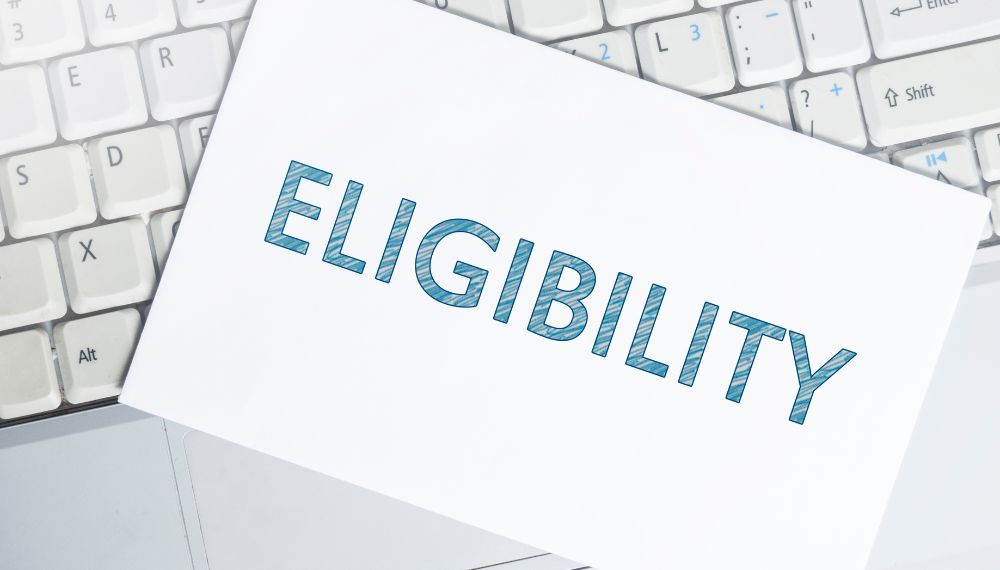If your business has kept its employees employed during 2020 and 2021, it’s likely that you qualify for the Employee Retention Credit or ERC. This credit can provide a substantial refund and inject much-needed funds back into your business. Today we will discuss the ERC claim deadline for 2023 employee retention credit claims and what you need to do.
What is ERC?

The Employee Retention Credit is a helpful resource provided by the U.S. government to aid businesses in navigating the economic difficulties caused by the 2019 pandemic. This credit was implemented as part of the CARES Act (Coronavirus Aid, Relief, and Economic Security) in 2020 March.
This credit facility is specifically aimed at business owners who suffered significant revenue losses or had to suspend operations due to government orders. It offers substantial financial assistance to such businesses.
An important feature of ERC is that it operates as a refundable payroll tax credit, rather than a loan. This means that businesses are not required to make any repayments. The primary goal of this credit is to assist businesses in retaining their employees during periods of economic uncertainty.
To be eligible for Employee Retention Credit (ERC), businesses must meet specific criteria, such as showing significant declines in gross receipts compared to specific quarters in 2019. This credit provides essential financial support that businesses can depend on during challenging times.
Understanding Employee Retention Credit (ERC) Through Different Laws

ERC has seen several changes under various legislative acts, each with its unique impact. Here’s a breakdown of how each law affected the ERC:
CARES Act of 2020 and ERC
Under the CARES Act of 2020, eligible employers encompassed those engaged in trade, business, or tax-exempt organizations. These qualifying employers could claim the credit against their share of the Social Security tax. The credit covered 50 percent of qualified wages paid, up to a maximum of $10,000 per employee annually. This credit is applied to wages paid between March 13 and December 31, 2020.
Consolidated Appropriations Act of 2021 and ERC
With the Consolidated Appropriations Act of 2021, eligible employers expanded to include Paycheck Protection Program (PPP) recipients, colleges/universities primarily providing medical care, and 501(c)(1) organizations. The credit rate increased to 70% of qualified wages paid, and the maximum wage amount qualifying for the credit remained at $10,000 per employee. Importantly, this law extended the credit eligibility to each quarter.
American Rescue Plan Act of 2021 and ERC
Under the American Rescue Plan Act of 2021, the ERC retained its 70% credit rate for qualified wages, with a maximum limit of $10,000 per quarter per employee. This allowed employers to claim a maximum of $7,000 per employee per quarter.
The program’s end date shifted for most businesses due to the Infrastructure Investment and Jobs Act, except for Recovery Startup Businesses, which remained eligible through the end of 2021. These startups had the potential to claim a credit of up to $50,000 for the third and fourth quarters of 2021.
These legislative changes have significantly impacted the ERC, providing different opportunities and relief for eligible employers during these challenging times.
ERC Claim Deadline: What Are The Deadlines for 2023 Employee Retention Credit Claims?

Although the ERC has expired in 2021, there’s still an opportunity for SMEs to file retroactive claims in 2023. If businesses want to take advantage of this, business owners need to submit Form 941-X from the IRS, it is specifically designed for making any changes to their previous 941s. There’s a crucial time constraint to keep in mind; this correction could be changed within three years of the original filing of their tax returns on payroll.
If a form 941 is submitted before 15th April of the following year, it is regarded as having been filed for the applicable year. It goes the same with the 2020, Form 941-X must reach the IRS no later than 15th April 2024. And if you are claiming for 2021, your submission deadline is 15th April 2025.
By adhering to these deadlines, businesses can ensure they don’t miss out on the opportunity to claim the ERC and secure valuable financial relief retroactively.
Who Meets the Requirements for ERC?

ERC is available to businesses that faced either a full or partial suspension of their operations due to government orders or experienced a substantial drop in total receipts during the pandemic. It’s important to note that ERC eligibility and calculation criteria differ for the years 2020 and 2021.
Eligibility Criteria of ERC 2020
Employers are eligible to claim ERC for the 2020 calendar year if they were engaged in a business and met one of the criteria;
- They faced a partial suspension of business operations during any quarter, as government mandates limited commerce, travel or group gatherings as a result of COVID-19.
- They experienced a decline in receipts by more than 50% YOY.
The maximum amount of wages that can be considered for each employee across all quarters is $10,000. Employers who qualify for the ERC can receive a credit of up to 50% of the $10,000 in wages per employee, which translates to a maximum credit of $5,000 per employee.
- For employers who had an average of over 100 employees (full-time) in 2019, this includes wages paid to employees who couldn’t work due to either a partial suspension of operations or a decrease in receipts.
- For employers with 100 or fewer full-time employees on average in 2019, this typically covers wages paid to all employees during periods when there was either a partial suspension or during quarters when there was a decline, in receipts, regardless of whether the employees were actively working.
It is important to mention that, in every situation, wages are subject to taxation, which includes contributions, towards health benefit plans.
Eligibility Criteria of ERC 2021
Starting on January 1, 2021 employers are eligible to claim Employee Retention Credit if they operated a business during 2021 and met any requirements below;
- Experienced a partial suspension of business operations during any quarter, due to government orders that restricted commerce, travel, or group gatherings because of COVID-19.
- Saw a decline in receipts in the second or third quarter of 2021, where the total receipts for that specific quarter were less than 80% of the total receipts for that same quarter of 2019.
Throughout the year 2021, qualifying employers can claim a credit of up to 70% of wages paid to employees from January 1st to September 30. For this year (2021), the credit amounts to 70% of the $10,000 qualified wages per quarter. This means that each employee can receive a credit amounting to $7,000 per quarter. As a result, employers who qualify for ERC can receive a credit amounting to $21,000, per employee for the entirety of 2021.
How can Someone Claim the ERC?
To claim the ERC, you’ll need to follow a straightforward process. Here’s a step-by-step guide on how to do it:
Initiate the Claim: Start the process by submitting a claim to the Internal Revenue Service (IRS). This claim will require you to provide essential information about your company and its employees. Additionally, you’ll need to include supporting documents that demonstrate how the COVID-19 pandemic impacted your business.
IRS Review: Once you have submitted the forms and supporting documents, the IRS will carefully assess your application. Their main goal is to determine if you or your business meets the eligibility criteria, for ERC. If you qualify, the credit will be applied to your payroll taxes. This financial assistance aims to help struggling businesses retain their employees during times.
Required Forms: When preparing your ERC application, ensure that you have the following forms
- Forms 941/941 X; These are the Employers Quarterly Federal Tax Return forms.
- Forms 7200; These are used for the Employer Credits Payable in Advance Under COVID-19.
- Form 8655; Also known as the RAA form, this form may be necessary for your application.
- If applicable, include PPP Application forms as well.
Statements: You will need statements for each quarter of 2019 (Q1 Q4), each quarter of 2020 (Q1 Q4) and Q1 of 2021. You can also include a Power of Attorney if it is required.
By following these steps and ensuring that you have all the required documents, in order you can confidently navigate through claiming ERC. This kind of credit is really helpful, for your business when it comes to keeping your employees during periods.
How is ERC calculated?
Calculating the Employee Retention Credit (ERC) may appear straightforward for experienced businesses. However, due to the complete nature of ERC guidelines to calculate, it can be a time-consuming process.
To be eligible for an ERC based on a decrease in gross receipts, you will need to compare the gross receipts from a specific quarter in either 2020-21 to the total receipts from the corresponding quarter in 2019. This will help determine the magnitude of the decline.
For example, if your business saw a decrease in total receipts of less than 50 percent during any quarter year-on-year (YOY), you may be eligible for the Employee Retention Credit (ERC). In 2021, the eligibility requirements have become slightly more relaxed. A business now qualifies for ERC if the total sales are lower than 80 percent YOY.
Conclusion
It’s important to mention that the Employee Retention Credit (ERC) functions as a tax credit, specifically for payroll taxes. This means that qualifying businesses can receive refunds on taxes they have already paid. Even if your business has little or no income tax liability, you may still be eligible for this opportunity to cover your costs. Ultimately, this credit is calculated as per the qualified wages paid and can provide essential support to SMEs in retaining their employees.
Frequently Asked Questions
How can I check the status of my ERC?
If you want to know the status of your ERC refund, the best way is to contact the IRS. You can reach them by calling 1 877 777 4778. This simple method will give you all the information you need regarding your ERC refund status.
What is the eligibility for ERC?
If your business experienced challenges or disruptions in either 2020 or ‘21, you might qualify for the ERC. To get up-to-date requirements, it’s recommended to visit the IRS website. They provide all the details to determine if your business qualifies for this credit.
Can business owners’ wages be considered for ERC?
Business owners who own more than 50% of a business or jointly own, than 50% are indeed eligible to claim the retention tax credit.
It’s always a good idea to check with the IRS or a tax professional to determine if your particular circumstances make you eligible, for the ERC.
Can part-time employees qualify for the ERC?
The eligibility criteria for ERC tax credit extend beyond full-time employees. Both time and part-time employees’ wages can meet the requirements, for the ERC tax credit.
